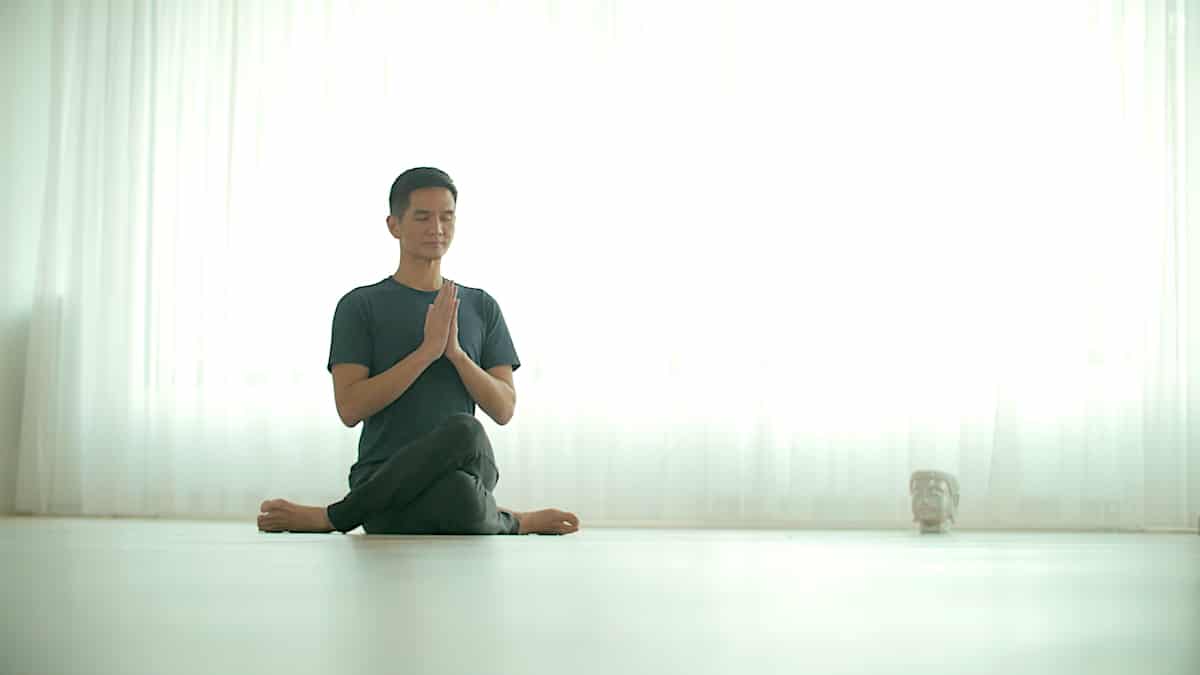The mind seems to be a mystery to many of us. While it’s fairly easy and uncontroversial to list the main functions of our physical bodies, that’s not quite the case with our minds. Meditation and awareness practices may provide a tool to explore the mystery of the mind.
In fact, it’s pretty baffling if you consider the different ideologies surrounding the functions of the mind. There are wide differentiations (sometimes contradictory) between explanations provided in psychology, philosophy and religion.
Table of Contents
Fortunately for us, Ayurvedic and yogic schools of thought tend to offer deep insights into this area of questioning, e.g. through meditation and awareness practices. They help us explore questions such as: What exactly is the nature of the mind? How is the mind connected to the body? What is its relationship to us?
“The problem is that to know the mind, we must first know ourselves. We must understand who we really are.”
Mediation and Awareness to Navigate the Mind
Imagine if, with no prior experience, you were thrown into a cockpit and told to fly a plane. You might be able to figure something out… but some previous instruction or guidance certainly would not have gone astray!
We’ve all already experienced a similar scenario when we were placed in the driver’s seat of our own minds.
“Learning the right use of the mind not only solves our psychological problems, but directs us to our higher potential of self-realisation.”
Many of us are never taught how to break or steer – that is, how to use our minds and all of its complex sensitivities. We’re usually left without being clued in to its comparative functions of: reason, feeling, will and sensory perception. The failure to understand our minds inevitably causes issues, such as blindly pursuing our desires, or an incessant aversion to discomfort.
In our societies it’s commonplace to take these secondary issues as being primary, which usually results in a blaming of others. Despite starting with the individual, we can see how this pattern has the unfortunate tendency to snowball into larger social and political issues. Witnessing and training our minds through meditation and awareness (or other mindfulness techniques, such as yoga), might not only help to solve psychological problems, but will also guide us to a higher potential of awareness.

Chris Su practicing meditation and awareness. Photograph by TINT.
Meditation and awareness allow us to gain greater control of our emotions and thoughts – reducing the hold they have over us. Gradually moving toward a more balanced point of existing, you will find yourself decreasingly governed by impulses, fears or desires. Depending on how they’re used, our minds have the ability to create either enormous negativity or tremendous beauty in the world.
The Mind as an Instrument
A simple concept but a game changer is when you start to regard the mind as an instrument. That is, considering it purely as a means of receiving information from our external worlds. If we approach it this way, we’ll notice that the mind really is the world’s best computer. Using our minds as tools, we’re allowed to direct our attention, develop feelings, develop our wills, and use reasoning. Our minds provide the highest organization of matter possible, and ultimately allow our physical worlds to be cognized.
Notice how we possessively talk about ‘your’ or ‘my’ mind, suggesting it’s something we have, rather than something we are. Issues arise when we forget this. The mind is an instrument for each of us, something we can control and not the other way around.
The Mind and Awareness
If you’ve ever sat in meditation, you’ll have surely noticed the seemingly never-ending thoughts that constantly flood our minds. These mental processes change from second to second. If you really pay attention though, you’ll notice that this stream of consciousness isn’t a ‘flowing stream.’ It’s actually a series of flashes of mental activity, discontinuous but occurring so rapidly, that we piece together an image. This means that because of its very nature, it is impossible to still the mind. Though this isn’t all bad news, as with meditation; we can access our awareness and stillness beyond the mind.
“There is something beyond our mind, which abides in silence within our mind. It is the supreme mystery beyond thought. Let one’s mind and spirit rest upon That and not anything else.”
When you start to explore the mind through meditation and awareness, you’ll notice that it starts to arise more distinctly over time. Sensations and thoughts eventually recede, and practitioners of meditation begin to experience stillness, peace, and the loving consciousness that underlies reality.
An Exercise for the Mind: Full Circle Awareness
By using this meditation exercise you can witness your awareness. This involves raising awareness of the part of you that observes your experience through your body, thoughts and emotions.
Find a quiet spot where you’ll be undisturbed for the next ten to twenty minutes. Sit comfortably with your spine elongated, either on the floor or on a chair. Close your eyes and take three deep, slow breaths. First, place your attention within your body. Observe how it feels, feel the heaviness of your weight pressing on the ground. Feel the stillness in your form. Now, in your mind’s eye, gently move this perspective upwards to take a birds-eye view of yourself, and observe your body from this new angle. Move your view around, so that you can see your body from the front, from behind and from below. Observe the shift in perspective that occurs. Next, while still holding this perspective, gently ask the question: ‘who is witnessing my body?’ Without allowing a verbal mental response, instead turn your attention toward the experience that arises as response to the question.
Continue this meditation and awareness practice for five to ten minutes and witness the process. Contemplate the effects and how you feel afterwards. What was the effect of this for you? How is your inner state now?
If you want to start your meditation practice right away, we can recommend this Ultimate Guide to Mindfulness Meditation for Beginners.
You can further develop your practice through the abundance of TINT programs that follow a meditative focus, such as Finlay Wilson’s The Spirit Within. Or you can join Matt Giordano for his 30 Day Yoga & Mediation Challenge.
Start a 30-Day Yoga & Meditation Challenge with Matt Giordano on TINT.
Another great method for further exploring meditation and awareness through a combination of physical and mental practices is Yin yoga. Have a look at our most recent release: The Power of Deep and Mindful Relaxation with renowned Yin yoga expert Chris Su.
References:
Sally Kempton, Meditation for the Love of it (Colorado: Sounds True, 2011)
David Frawley, Ayurveda and the Mind: the Healing of Consciousness (Wisconsin: Lotus Press, 1997)





